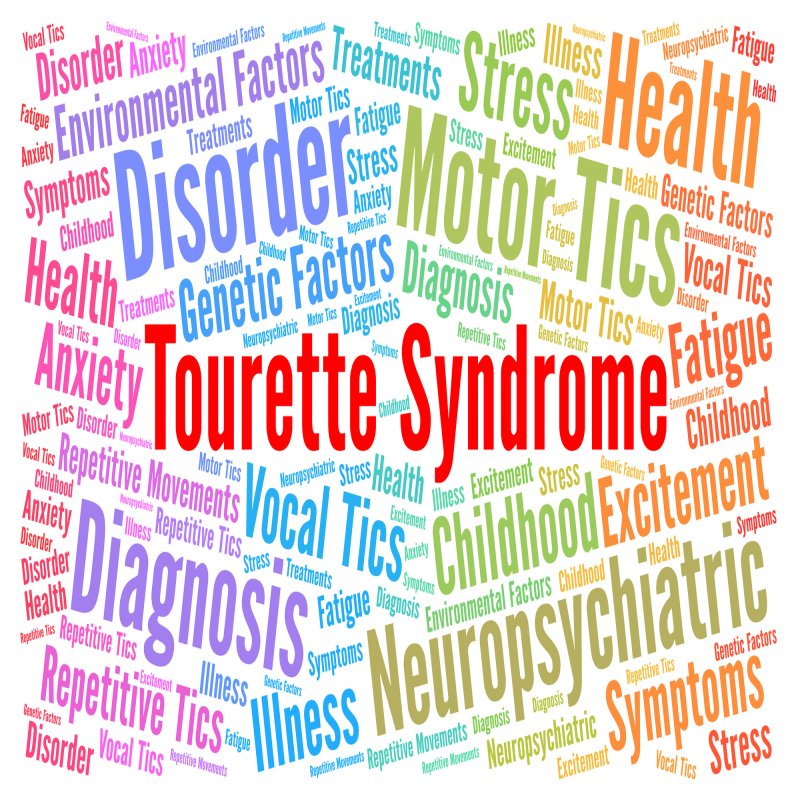
Autism is a complex world full of unique behaviors and challenges. One key aspect is "stimming" – repetitive actions like rocking or hand-flapping that help soothe and comfort autistic individuals. Another is motor tics, involuntary movements, or sounds that are often hard to control.
Stimming
Stimming refers to self-stimulating behaviors, which are repetitive physical or verbal tics common in individuals with autism. Nail biting, twirling your hair, drumming your fingers on the table, or cracking your knuckles are all forms of stimming. For a child with autism, stimming might involve motor tics like rocking back and forth, licking lips, flapping hands, or repetitive blinking. It may also include verbal tics like grunting or repeating words or phrases, a behavior known as scripting or echolalia.
Stimming behaviors are not a problem by default, but they can become an issue if they interfere with everyday life or create challenges for the family or others. Neurotypical individuals—that is, individuals without autism—may adjust their stimming behavior in response to social cues. Individuals with autism often have difficulty picking up on social cues, which can result in disruptive behavior.
Stimming behaviors are often harmless; they can result from anxiety or stress, in which case they may be unproductive. It is worth taking note of any stimuli or environmental factors that seem to trigger repetitive behavior or tics. Encouraging communication with your child, as well as treatments such as ABA therapy, can help children with autism learn to manage these behaviors and address their underlying causes.

Motor Tics
A motor tic disorder is a neurodevelopmental condition that often emerges in childhood and may be comorbid with attention deficit hyperactivity disorder or obsessive-compulsive disorder.
A tic could be described as a brief-lasting movement or sound interrupting normal behavior. Tics are involuntary movements or vocalizations that occur suddenly and repetitively. Although the tic or behavior is usually repetitive, it is not rhythmic.
In some articles, the different types of tic disorders will be discussed, not to facilitate self-diagnosis but to help alert parents to symptoms that may need further evaluation and possible diagnosis by a professional. Your autistic child may have ADHD or other comorbidities, and this may confuse symptoms. This is why it is important to seek an accurate diagnosis that takes the child’s history and coexisting conditions into consideration.
Examples of motor tics:
- Head twitching
- Blinking or eye jerks
- Sticking out the tongue
- Shrugging of the shoulder
- Facial grimacing
- Nose twitching
Complex vocal tics could also mean a child repeats his or her own words or those of others. Repeating what others say is referred to as echolalia, and it is a symptom of both autism and Tourette syndrome.
Another complex vocal tic is coprolalia, which involves unintentional occurrences of inappropriate or obscene vocalizations. This can cause severe disruption in many areas of a person’s life. Less than 20% of individuals with Tourette syndrome will have an occurrence of this symptom in their lifetime.
In addition to having two or more motor tics and at least one vocal tic, as illustrated by the examples above, the child should start showing tics before reaching the age of 18 years. The child should have had such tics for a year, and he or she should not be on any medication that may be the cause of such behavior tics.

Types of Tic Disorder
- Motor tics: involve repetitive body movements.
- Vocal tics: involve voice sound.
- Tourette syndrome: involves both vocal and motor tics.
According to 2020 research three additional subtypes:
- Clonic: are abrupt and fast jerking movements.
- Dystonic: are slower and result in brief abnormal postures.
- Tonic: are isometric contractions that involve the tensing of the muscles.
How to Help Treat Tics in Children with Autism
When aiming to treat autism and tic disorders in children with autism, there are several techniques and therapies. The first step in treating tics is to select the most significant symptoms, those that create the most problems within the child's daily functioning.
Behavioral Therapy for Autism and Tics Disorder
Behavioral therapy is often recommended for both autism and tics disorder in children; specifically, it is called habit reversal therapy. To treat tics disorder, children need to identify possible triggers. For example, learn various breathing exercises and relaxation techniques to decrease tic frequency. Since there are unique challenges that children with autism face, it’s important to seek treatment, guidance, and ongoing education from those who are experienced with and understand this spectrum disorder.
Challenges with Social Interaction in Children and Autism
Social communication, also called pragmatics, means the way children use language in social situations.
There are three major skills in social interaction:
- Using language for different reasons, like greeting or informing
- Adapting the language depending on the context and listener
- Following the conventions and rules of that specific language
Social Communication in Autism
Autism spectrum disorder (ASD) is a lifelong neurodevelopmental disorder characterized by deficits in social communication and interaction along with restricted and repetitive behavior.
Social communication deficits may be seen in various ways. This may include difficulties in social reciprocity in addition to challenges faced when using verbal and nonverbal communication in social situations.
Since social communication problems are a defining characteristic of ASD, social communication disorders cannot be diagnosed in conjunction with ASD.
There are three specific deficit areas in terms of social communication where symptoms are observed:
- Joint attention
- Social reciprocity
- Social cognition
Joint attention: The shared focus of two or more individuals on the same object. Deficits in joint attention include the following:
- Limited recognition and description of another’s emotions, ideas, intentions
- Restricted range of communicative functions
- Lack of desire to seek engagement with others
Social reciprocity: The mental processes involved in perceiving, attending to, remembering, thinking about, and making sense of the people in our social world
- Difficulty in social and emotional learning
- Difficulty in understanding and regulating emotions
- Challenges with recognizing other people’s ideas and emotions
- Difficulty in using interpersonal skills to handle developmentally appropriate tasks.
Autism and Social Interaction
Children with autism may struggle in social situations. Although the characteristics of ASD vary from one person to another, the individual is assessed based on having persistent and significant difficulties with social interaction and social communication to make a diagnosis.
Children with autism may have the following social interaction difficulties:
- Seeming distant
- Seeming indifferent to other people
- Preferring being alone
- Preferring playing alone
- Not initiate contact.
These social interaction deficits in autism may cause the child to have difficulties in social situations. Their peers may not understand them, causing the autistic child to be an outcast.
There exist various techniques to instruct children with autism in social communication.
Peer monitoring: In this type of social skills intervention, typically developing peers are trained to interact with autistic children. This is done to enhance the positive development of social skills in regular social communication environments like classrooms.
Social skills group: In this type, around 4 or 5 students with autism take lessons about social skills topics. This can be done at school or clinic facilities. Within this group, there may also be typical peers who are role models.
Video modeling: Through this practice, autistic children watch videos that show peers demonstrating certain social skills. Autistic children are then encouraged to practice the skills themselves.
Social stories: Social stories can help children with autism learn appropriate social skills by reading short stories written in the first person. You can create social stories with your children. Also, mobile device applications provide social stories with visuals and social situations that can help your child. You can check out the Otsimo Special Education app for fun, comprehensive, and effective social stories.
Picture books: Children with autism learn better and quicker with visuals. By looking at photographic sequences of social skills, they may learn how to perform a skill as well as the purpose of such a skill.
Not being able to fit in socially can create a lot of social anxiety for children with autism. Through therapies, the child can be equipped with social skills, and this anxiety can be alleviated.
Conclusion
In conclusion, autism presents unique challenges like stimming and motor tics, which can help autistic individuals cope but may sometimes interfere with daily life. Social communication difficulties are also common and can be addressed through therapies like behavioral therapy and social skills groups. By understanding these challenges and using supportive strategies, we can help individuals with autism improve their social interactions and overall quality of life, enabling them to thrive in their way.
Frequently Asked Questions (FAQs)
1. What role does sensory sensitivity play in autism-related behaviors?
Sensory sensitivity is a hallmark of autism, influencing how individuals perceive and respond to sensory input like sounds, textures, or lights. It can contribute to stimming behaviors as a way to regulate overwhelming sensory experiences.
2. Are there specific therapies that help with both autism and tic disorders?
Behavioral therapies like habit reversal therapy can be effective for managing both autism-related behaviors and tic disorders. These therapies focus on identifying triggers, learning coping strategies, and improving social skills to reduce the impact of these behaviors on daily life.
3. What are some innovative approaches to teaching social skills to children with autism?
Techniques such as video modeling, social stories, and interactive apps designed for autism education can help teach social skills in a visual and structured way. These methods cater to different learning styles and encourage practical application in real-life situations.
4. What are some misconceptions about autism-related behaviors, and how can they be addressed?
Misconceptions about stimming, echolalia, or social communication difficulties can lead to misunderstandings and stigma. Educating others about the diverse ways autism manifests and promoting acceptance can help create a more inclusive society for individuals on the spectrum.
5. How can families and caregivers best support individuals with autism in their daily lives?
Families and caregivers can support individuals with autism by fostering a structured routine, promoting clear communication, recognizing and respecting sensory sensitivities, and advocating for inclusive environments that embrace neurodiversity.


.png)


